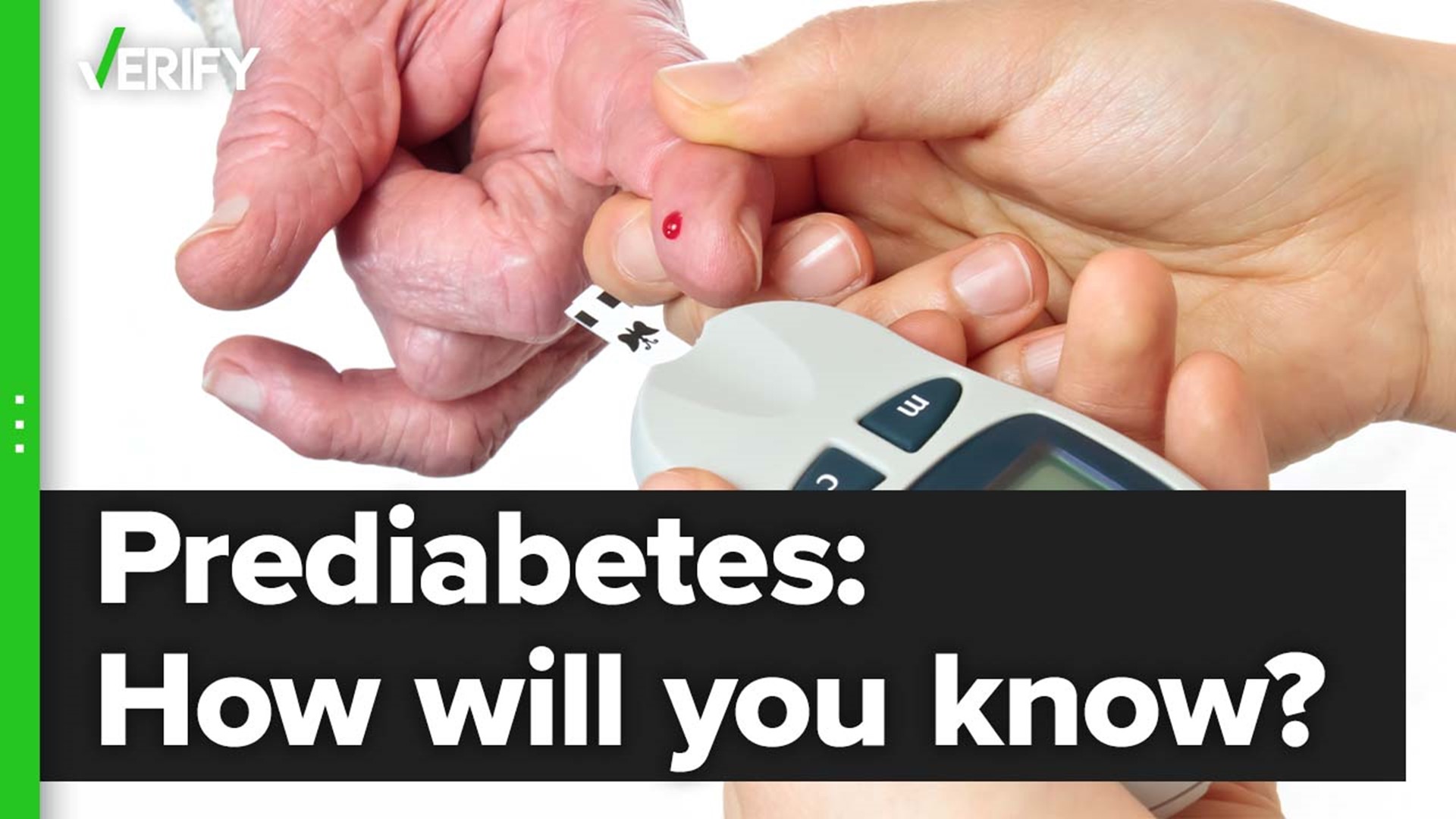Prediabetes is a serious health condition where blood sugar levels are higher than normal but not high enough to be diagnosed as type 2 diabetes. According to the U.S. Centers for Disease Control and Prevention (CDC), 88 million American adults — more than 1 in 3 — have prediabetes and over 84% of those people don’t even know they have it.
The CDC and the American Diabetes Association say a person can have prediabetes for years but have no clear symptoms. A simple blood sugar test can show whether someone is prediabetic, but doctors aren’t required to give people that test.
THE QUESTION
Is there a way for people to know if they’re prediabetic without a test?
THE SOURCES
- American Diabetes Association
- U.S. Centers for Disease Control and Prevention (CDC)
- Dr. Michael J. Barry, vice-chairperson of the U.S. Preventive Services Task Force
- Dr. Griffin Rodgers, director of the National Institute of Diabetes, Digestive and Kidney Diseases at the National Institutes of Health
THE ANSWER
No, there isn’t a way for people to know if they’re prediabetic without a test.
WHAT WE FOUND
According to the CDC, prediabetes is caused when the cells in a person’s body don’t respond normally to insulin, a hormone “that acts like a key to let blood sugar into cells for use as energy.” Risk factors for prediabetes include:
- Being overweight
- Being 45 years or older
- Having a parent, brother, or sister with type 2 diabetes
- Being physically active less than three times a week
- Experiencing gestational diabetes (diabetes during pregnancy) or giving birth to a baby who weighed more than 9 pounds
- Having polycystic ovary syndrome
Race and ethnicity are also a factor, according to the CDC. African Americans, Latino Americans, Indigenous Americans, Pacific Islanders and some Asian Americans are at higher risk of developing prediabetes.
The CDC says the best way for a person to find out if they’re prediabetic is by asking their doctor for a simple blood sugar test. Dr. Michael J. Barry, who serves as the vice-chairperson of the U.S. Preventive Services Task Force, told VERIFY the Task Force recommends that adults between the ages of 35 and 70, who are overweight or obese, be screened for prediabetes and diabetes.
“The strongest risk factors for prediabetes and diabetes are age and weight,” said Barry. “We would recommend in general that people talk to their clinicians about preventive health care across all conditions. You don't want to have tunnel vision on one.”
Dr. Griffin Rodgers, the director of the National Institute of Diabetes, Digestive and Kidney Diseases at the National Institutes of Health, told VERIFY a person with undiagnosed or untreated prediabetes may eventually be diagnosed with type 2 diabetes, so it’s important for them to advocate for themselves and ask their doctor to be tested.
“If you have prediabetes, within the next five to 10 years, you have a 50% chance of developing diabetes,” said Rodgers. “The first question you might ask your health care provider is, ‘Are you going to test me for diabetes or pre-diabetes?’ And if not, ‘I'd like to be tested at least once.’”
The American Diabetes Association says if a person gets a prediabetes diagnosis after getting tested, they have the power to change things.
“For some people with prediabetes, early treatment, as well as moderate lifestyle changes, can actually return blood sugar levels to a normal range, effectively preventing or delaying type 2 diabetes,” the American Diabetes Association said. “Ask your doctor plenty of questions and listen to the answers you get. Increase your daily physical activity. Start eating healthy. And your life can be yours again.”

